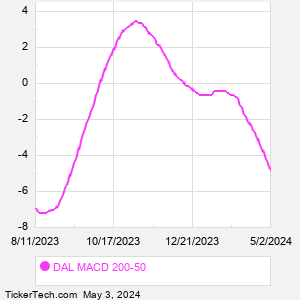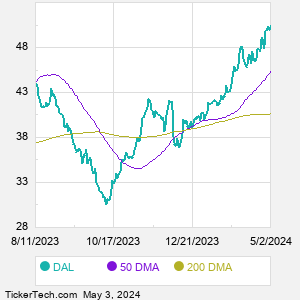Delta Air Lines is a global airline. Co. has the following operating segments: Airline Segment, which is managed as a single business unit that provides scheduled air transportation for passengers and cargo throughout the U.S. and around the world and includes its loyalty program, as well as other ancillary airline services; and Refinery Segment, in which its Monroe Energy, LLC subsidiary (Monroe) operates the Trainer oil refinery and related assets located near Philadelphia, PA. Monroe's operations include pipelines and terminal assets that allow the refinery to supply jet fuel to Co.'s airline operations throughout the Northeastern U.S., including its New York hubs at LaGuardia and JFK
When researching a stock like Delta Air Lines, many investors are the most familiar with Fundamental Analysis — looking at a company's balance sheet, earnings, revenues, and what's happening in that company's underlying business. Investors who use Fundamental Analysis to identify good stocks to buy or sell can also benefit from DAL Technical Analysis to help find a good entry or exit point. Technical Analysis is blind to the fundamentals and looks only at the trading data for DAL stock — the real life supply and demand for the stock over time — and examines that data in different ways. One of those ways is to calculate a Simpe Moving Average ("SMA") by looking back a certain number of days. One of the most popular "longer look-backs" is the DAL 200 day moving average ("DAL 200 DMA"), while one of the most popular "shorter look-backs" is the DAL 50 day moving average ("DAL 50 DMA"). A chart showing both of these popular moving averages is shown on this page for Delta Air Lines. Comparing two moving averages against each other can be a useful visualization tool: by calculating the difference between the DAL 200 DMA and the DAL 50 DMA, we get a moving average convergence divergence indicator ("DAL MACD"). The DAL MACD chart, in conjunction with the chart of the moving averages, basically helps in visualizing how the moving averages are showing convergence (moving closer together), or divergence (moving farther apart). |



